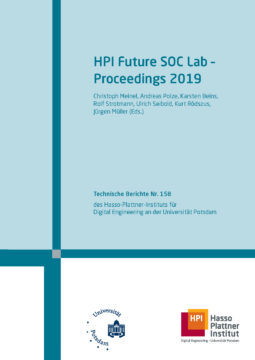The book deals with the different types of enmity in computer games that shape the interactivity of that novel medium. A typology consisting of three equal parts is generated that allows classify every computer game that can be thought of. First, there is “competition” which is characterized by equality of chances and a movement that is aimed at one single goal. Second, „hostility“ makes the players pursue different, often contrary goals while the will to kill each other influences their actions. Third and last „environment“ is a type of enmity where the players do not fight living enemies, but obstacles of the game world. As a work that derives from a Media Science point of view, the way violence is implemented plays a key role in the dealing with the topic.This leads to the attempt of systemizing the interactivity of computer games via agonal elements of the game play. In competitions violence is domesticated while it is celebrated in hostile games and channeled in games where the player fights against the game world. However, this work is not meant to choose an pedagogical, but an analytical focus. Furthermore, criterias are developed that allow to identify the different types of enmity. A simple matrix is deduced that explains the relationship of the three types while a final outlook indicates the practical implementation of this whole conceptualization.Classifications of computer games is concerned with the terms that are used to label computer games for classificatory purposes. A representative selection of such classification models, that covers the works of designers, journalists, pedagogues, laymen and explicit computer game researchers, are introduced and assessed with regard to their ability to classify specific games unambiguously. Two essentially different approaches to this problem are identified: “categorizations” establish rigid categories to which single games are to be assigned unambiguously, while “typologies” examine and classify single elements of games and not games as a whole. Both methods are analysed and their advantages and disadvantages are shown. As it becomes obvious that classifying computer games is highly dependent on the respective basic understanding of what a computer game is, the study of the classification models is preceded by an overview which discusses four chosen aspects as examples of this problematic definition.
ISBN: 978-3-86956-076-2
145 pages
Release year 2010
Series: DIGAREC Series , 5
18,00 €
Non-taxable transaction according to § 1 (1) UStG/VAT Act in combination with § 2 (3) UStG/VAT Act a. F. Providing this service, the University of Potsdam does not constitute a Betrieb gewerblicher Art/Commercial Institution according to § 1 (1) No. 6 or § 4 KStG/Corporate Tax Act. If the legal characterization of our business is changed to a commercial institution subsequently, we reserve the right to invoice VAT additionally. zzgl. Versandkosten
The book deals with the different types of enmity in computer games that shape the interactivity of that novel medium. A typology consisting of three equal parts is generated that allows classify every computer game that can be thought of. First, there is “competition” which is characterized by equality of chances and a movement that is aimed at one single goal. Second, „hostility“ makes the players pursue different, often contrary goals while the will to kill each other influences their actions. Third and last „environment“ is a type of enmity where the players do not fight living enemies, but obstacles of the game world. As a work that derives from a Media Science point of view, the way violence is implemented plays a key role in the dealing with the topic.This leads to the attempt of systemizing the interactivity of computer games via agonal elements of the game play. In competitions violence is domesticated while it is celebrated in hostile games and channeled in games where the player fights against the game world. However, this work is not meant to choose an pedagogical, but an analytical focus. Furthermore, criterias are developed that allow to identify the different types of enmity. A simple matrix is deduced that explains the relationship of the three types while a final outlook indicates the practical implementation of this whole conceptualization.Classifications of computer games is concerned with the terms that are used to label computer games for classificatory purposes. A representative selection of such classification models, that covers the works of designers, journalists, pedagogues, laymen and explicit computer game researchers, are introduced and assessed with regard to their ability to classify specific games unambiguously. Two essentially different approaches to this problem are identified: “categorizations” establish rigid categories to which single games are to be assigned unambiguously, while “typologies” examine and classify single elements of games and not games as a whole. Both methods are analysed and their advantages and disadvantages are shown. As it becomes obvious that classifying computer games is highly dependent on the respective basic understanding of what a computer game is, the study of the classification models is preceded by an overview which discusses four chosen aspects as examples of this problematic definition.
Recommended Books
-
 2016
2016Hochschuldidaktik der Informatik
9,50 €Non-taxable transaction according to § 1 (1) UStG/VAT Act in combination with § 2 (3) UStG/VAT Act a. F. Providing this service, the University of Potsdam does not constitute a Betrieb gewerblicher Art/Commercial Institution according to § 1 (1) No. 6 or § 4 KStG/Corporate Tax Act. If the legal characterization of our business is changed to a commercial institution subsequently, we reserve the right to invoice VAT additionally.
zzgl. Versandkosten
Add to cart -
 2023
2023Christoph Meinel, Michael Galbas, David Hagebölling
Digital sovereignty
0,00 €Non-taxable transaction according to § 1 (1) UStG/VAT Act in combination with § 2 (3) UStG/VAT Act a. F. Providing this service, the University of Potsdam does not constitute a Betrieb gewerblicher Art/Commercial Institution according to § 1 (1) No. 6 or § 4 KStG/Corporate Tax Act. If the legal characterization of our business is changed to a commercial institution subsequently, we reserve the right to invoice VAT additionally.
Add to cart -
 2024
2024Meinel, Christoph; Polze, Andreas; Beins, Karsten; Strotmann, Rolf; Seibold, Ulrich; Rödszus, Kurt; Müller, Jürgen; Sommer, Jürgen (Hrsg.)
HPI Future SOC Lab – Proceedings 2020
Non-taxable transaction according to § 1 (1) UStG/VAT Act in combination with § 2 (3) UStG/VAT Act a. F. Providing this service, the University of Potsdam does not constitute a Betrieb gewerblicher Art/Commercial Institution according to § 1 (1) No. 6 or § 4 KStG/Corporate Tax Act. If the legal characterization of our business is changed to a commercial institution subsequently, we reserve the right to invoice VAT additionally.
Read more -
 2024
2024Meinel, Christoph; Polze, Andreas; Beins, Karsten; Strotmann, Rolf; Seibold, Ulrich; Rödszus, Kurt; Müller, Jürgen (Hrsg.)
HPI Future SOC Lab – Proceedings 2019
0,00 €Non-taxable transaction according to § 1 (1) UStG/VAT Act in combination with § 2 (3) UStG/VAT Act a. F. Providing this service, the University of Potsdam does not constitute a Betrieb gewerblicher Art/Commercial Institution according to § 1 (1) No. 6 or § 4 KStG/Corporate Tax Act. If the legal characterization of our business is changed to a commercial institution subsequently, we reserve the right to invoice VAT additionally.
Add to cart
Publisher Info
Contact
Potsdam University Library
University Press
Am Neuen Palais 10
14476 Potsdam
Germany
verlag@uni-potsdam.de
0331 977-2094
0331 977-2292





